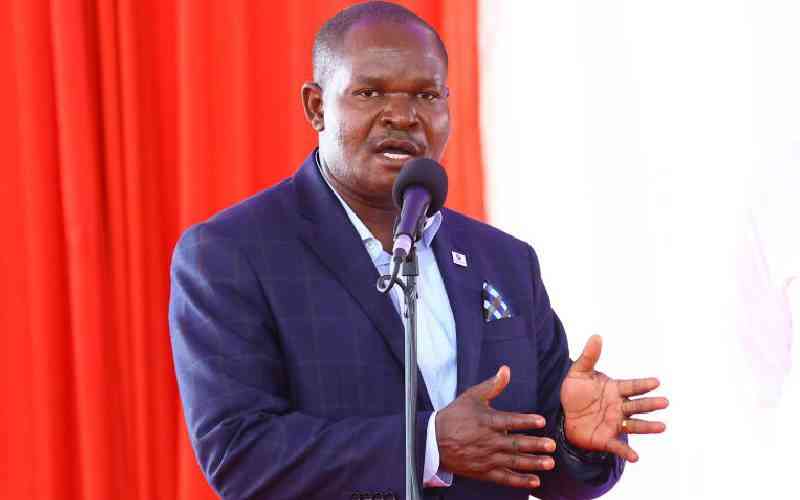Kenya lags behind sub-Saharan Africa in poverty reduction, as uneven wealth distribution widens the rich-poor gap.
This is despite Kenya’s gross domestic product (GDP) expanding by an average 4.8 per cent since 2000.
This additional wealth generation has benefited only a small section of the population, leaving millions of low-income earners trapped in cycles of poverty.
A new development index places Kenya fourth in the region in transforming the benefits of growth into wellbeing for citizens, despite the country’s economic and political clout.
Ethiopia on top
Ethiopia is ranked top in the index that seeks to go beyond the use of GDP in measuring economic wellbeing, with Rwanda emerging second and Tanzania third.
The rankings were presented in the latest edition of the Sustainable Economic Development Assessment Index (SEDA), published by global think-tank Boston Consulting Group.
“Leaders around the world increasingly recognise that GDP alone cannot give a full picture of a country’s performance, as the wellbeing of the citizens is an even more important measure,” the study reads in part.
Large African economies like South Africa, Nigeria, Angola and Kenya scored poorly in transforming this wealth into improved wellbeing for their citizens, with smaller economies like Rwanda and Sierra Leone scoring higher in recent progress towards alleviating poverty.
The index defines wellbeing using three elements.
The first is economics, which gauges a country’s performance in generating balanced growth through income, economic stability and employment.
The second is investments in sectors like health, education and infrastructure that boost economic growth and wellbeing.
The third is sustainability, which refers to environment and social inclusion measures that factor in indicators of income equality, civil society and governance.
These indicators were then collated to generate scores of a country’s current level and recent progress in wellbeing.
The findings released last month are the latest evidence of the uneven wealth distribution model that has seen many low and middle-income Kenyans question the country’s economic growth data.
Stay informed. Subscribe to our newsletter
The World Bank early this year said Kenya’s growth is volatile and lacks inclusivity. The volatility has been attributed to external (trade or global commodity prices) and domestic factors (election cycle or drought), with the latter having a larger and more ruinous impact on the economy.
The economy has further been affected by the stagnation of what should be the country’s growth engines — manufacturing and agriculture.
The contribution of agriculture to the country’s GDP has shrunk from 26.5 per cent in 2006 to 22 per cent in 2014. Over this period, the contribution of manufacturing to GDP also shrunk, stifling competitiveness, productivity and innovation. As a result, the economy has been unable to increase the number of jobs available for its growing skilled and educated population.
When stacked against comparator countries like Senegal, Ghana, Tanzania and Burkina Faso, Kenya’s youth unemployment stands at 17 per cent, double the figure in Tanzania and thrice as high as in Burkina Faso (see graph on Page 2).
The country’s unemployment levels have, however, fallen marginally from 46 per cent in 2006 to 42 per cent in 2013.
National savings
Further, data from the Kenya National Bureau of Statistics indicates that only one in four people working in formal employment earn more than Sh50,000 per month. This lowers the amount of available national savings required to fuel economic growth.
Ethiopia, on the other hand, has managed to not only grow GDP at an impressive 10.9 per cent over the last 15 years, but leads the continent in translating this growth into wellbeing for its citizens.
The World Bank estimates that the country has been able to cut the population living on less than $1.25 (Sh125) a day from 56 per cent in 2001 to 31 per cent in 2011.
This poverty reduction has simulated foreign direct investment that is slowly turning Addis Ababa into the economic centre of the region.
It has also put Ethiopia on course to attain its plan to achieve middle-income status by 2025, beating Kenya to become the regional economic powerhouse that improves the living standards of its citizens.
[email protected]
 The Standard Group Plc is a
multi-media organization with investments in media platforms spanning newspaper
print operations, television, radio broadcasting, digital and online services. The
Standard Group is recognized as a leading multi-media house in Kenya with a key
influence in matters of national and international interest.
The Standard Group Plc is a
multi-media organization with investments in media platforms spanning newspaper
print operations, television, radio broadcasting, digital and online services. The
Standard Group is recognized as a leading multi-media house in Kenya with a key
influence in matters of national and international interest.
 The Standard Group Plc is a
multi-media organization with investments in media platforms spanning newspaper
print operations, television, radio broadcasting, digital and online services. The
Standard Group is recognized as a leading multi-media house in Kenya with a key
influence in matters of national and international interest.
The Standard Group Plc is a
multi-media organization with investments in media platforms spanning newspaper
print operations, television, radio broadcasting, digital and online services. The
Standard Group is recognized as a leading multi-media house in Kenya with a key
influence in matters of national and international interest.







